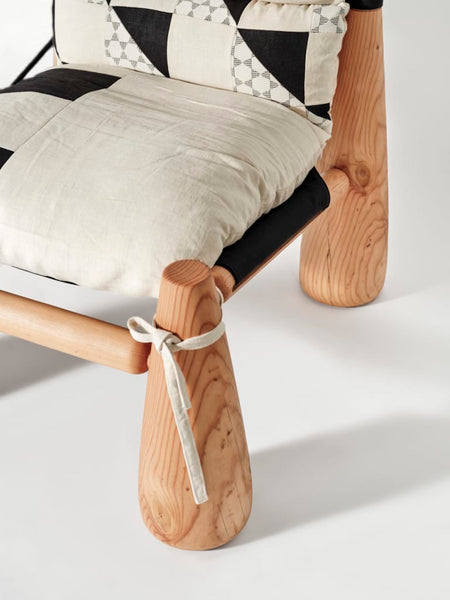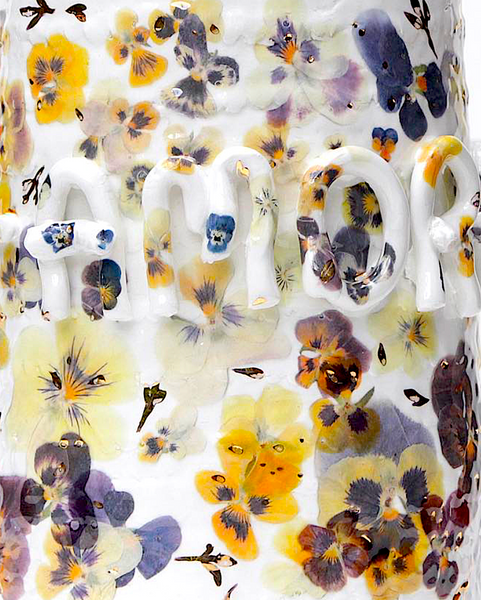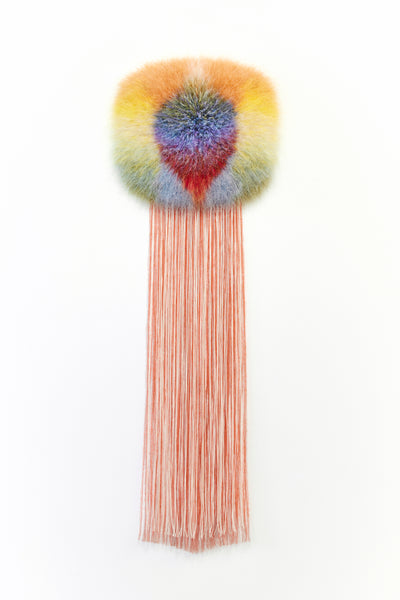Architecture & Urban Design
A Room with a View
Albert Frey’s iconic Palm Springs desert landscape residence
Perched part way up the San Jacinto Mountain, Frey House II is a small yet exquisite icon of Desert Modernism style built directly into the Palm Springs hillside. Designed by lauded Swiss architect Albert Frey and completed in 1964, the deceptively simple 800-square-foot structure served as Frey’s personal residence for over 30 years. Needless to say, the views of the Coachella Valley and the city below are incredible.

Frey’s home celebrates nature at every turn; at its core, in fact, stands a dramatic boulder around which Frey conceived his design. The massive stone juts through a glass wall and serves as a divider between the sleeping and living spaces. Frey hunted for the perfect natural setting for five years before choosing this site 220 feet above downtown Palm Springs—placing Frey House II at the highest elevation of any residence in the city at the time it was built. After selecting his location, Frey spent another full year tracking the movement of the sun to determine the best layout for each gathering space and window. According to the website of Palm Springs Art Museum, which is now responsible for the building’s care, upon reviewing Frey’s ambitious plans, Palm Springs City Hall called the design “crazy,” but ultimately gave its approval.

Drawing from the rugged terrain for inspiration, Frey—whose practice is known for efficient use of materials and working in harmony with natural surroundings—poured a concrete base, upon which he constructed a steel frame encased mainly in glass curtain walls and topped with a corrugated aluminum roof that overhangs to provide protection from the sun. Pinkish concrete blocks intentionally blend into the valley’s stunning pink sunsets. The picturesque pool and patio stand on a deck that serves as the roof for the carport below.
“The slope of the roof,” Frey once said,1 “follows the slope of the terrain, the contrast between the natural rock and the high-tech materials is rather exciting.” Built-in furnishings help make the small interior super functional. (These include, among other elements, furniture, storage, and a hidden turntable.) In 1967, Frey added a small, 300-square-foot addition to serve as a guest room. Bequeathed to Palm Springs Art Museum upon the architect’s death,the house remains today just as Frey left it.

The Zurich-born architect first came to Palm Springs in 1934 in his early thirties for work, and fell in love with the beauty and energy of the area. He found Coachella Valley allowed him to commune with nature, offered a rich testing ground for his architectural dreams, and, intriguingly, played host to a vibrant Hollywood scene. Describing the vibe of the era in a 1936 letter to his mentor, Le Corbusier, Frey recounted being impressed by “the intellectual milieu in Palm Springs”—a dichotomy between civilization and “a wild, savage, natural setting” that fascinated him.2 He decided to stay.

Frey would go on to have a prolific career in Palm Springs, helping define the Desert Modernist movement through several designs concentrated in the area—including two of his own personal residences. He remained in Palm Springs for six decades, until his passing in 1998 at the age of 95.

According to Brad Dunning, guest curator of an upcoming, major retrospective on Frey’s work at the Palm Springs Art Museum, Frey House II continues to spark particular fascination because: “As is often the case, an architect’s own home best reflects his architectural philosophy and style; there is no client interference. This is particularly true of Frey’s second and final home, the culmination of his lifelong investigation into sustainable and long-lasting building materials, a Palm Springs context and color palette, and finally fulfilling his own spartan personal living requirements with succinct accuracy.”
He goes on: “He had everything he needed there, especially a rugged and very private natural site for both working from the house and worshiping nature beyond its glass walls, often at the same time. As with his first home, a swimming pool is placed extremely close to the house to create a desert oasis and even psychologically cool the environment in the hot months.”

Asked what he most hopes people take away from the exhibition, Dunning tells us: “Arguably, Albert Frey is the most important of what is now called the Palm Springs School, those architects who built and are now associated with Palm Springs' mid-century Desert Modernism style… I want people to understand how important it is that Frey, the first employee and disciple of Le Corbusier to immigrate to America, initially to New York then ending up in remote Palm Springs, where he designed and got built so much in the small town. Frey's early Corb-taught International Style evolved into his own signature and very specific and identifiable mid-century modern expressionism—that was like no other.”
Further, he says, “One creation by Frey in any American town would be cause for celebration and admiration; Palm Springs is lucky enough to have dozens still standing and more than a few of those worthy of international merit and appreciation. Frey could have easily had a storied and prosperous career if he stayed in New York, where he was offered enviable positions with major firms, but he was a nature lover and also recognized the possibility of not only a decent career but a great, prosperous, and healthy life in the Southern California desert.

For those lucky enough to visit the Frey II (which is open only by appointment), Frey’s reverence for the environment is palpable. Marc Koller, Frey’s godson, often gives tours of the space organized by the Museum, and recalls spending substantial time there as a child. He hopes those who see the space in person, even briefly, will appreciate both the purity of that natural setting and the love that Frey put into it.
Koller recalls, “I had the opportunity to grow up visiting the Frey II, beginning at the age of five. My parents and Albert were very dear friends, and when we would visit, with Albert’s permission, my parents turned me loose. I was given the freedom to climb that boulder with my hands and feet; to swim in the pool; and to hike among the rocks and ocotillos behind his home. And I loved every minute of it. I learned a lot by observing my godfather and always respected his connection to nature, his gentle manner, and his kindness towards others.”

“Albert once told me that Mt. San Jacinto reminded him of the Swiss Alps, and seeing the desert floor for the first time thrilled him with the many possibilities of practicing his modern dreams as in a laboratory.”
Koller says he often ends his tours by encouraging people to simply relax for a moment in the space that Frey called home for over three decades. He encourages guests to take a few minutes “on the outdoor, built-in seating areas and soak in the stunning views as my Godfather once did—looking easterly and to its southern directions. Don’t be surprised if you see a bighorn Sheep or a chuckwalla lizard passing by, they are usually nearby.” ◆
*Special thanks to Palm Springs Art Museum, Scott Slaven, Brad Dunning, and Marc Koller for their contributions and support.
*The retrospective exhibition, Albert Frey—Inventive Modernist, guest curated by Brad Dunning, is scheduled for January - June 2024 at Palm Springs Art Museum.
References:
- Palm Springs Art Museum, Frey House II, accessed 1 April 2023, <https://www.psmuseum.org/visit/frey-house>.
- Emily Chavous, Frey House II, Modernism Week February 16-26, 2023: A Palm Springs Life Event [pamphlet], supported by Palm Springs Art Museum, Melissa Morgan Fine Art, and The Art Collective



